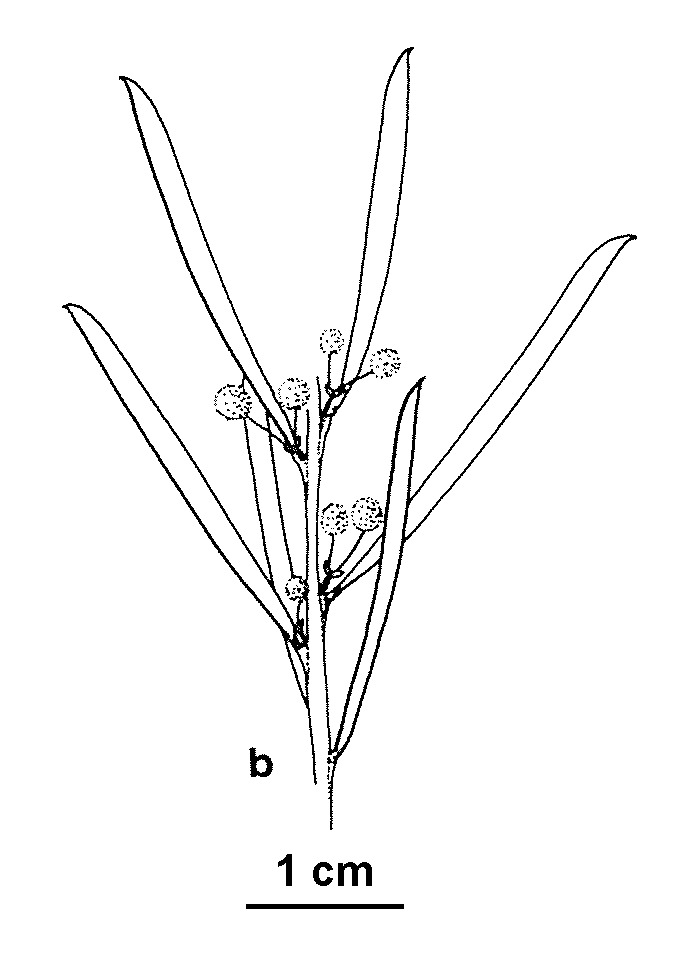Acacia ×grayana
J.H.WillisDense shrub or tree, 2–3 m high; branchlets glabrous except sometimes at often angled extremities where appressed-hairy; new shoots glabrous to densely covered in appressed, white or pale golden hairs. Phyllodes narrowly oblanceolate or narrowly elliptic to more or less linear, 2.5–5.5 cm long, 2–4.5 mm wide, glabrous, normally uncinate; midrib moderately prominent, pinnate veins obscure; stipules deciduous. Raceme with rachis usually 1–5 mm long and 2–3-headed, subglabrous to moderately antrorsely pubescent with white or pale golden hairs; peduncles 4–12 mm long, indumentum as on rachis; heads globular, 20–35-flowered, bright golden. Flowers 5-merous; sepals united or free. Pods submoniliform, to c. 7 cm long, c. 6 mm wide, thinly coriaceous, glabrous; seeds longitudinal, elliptic, c. 6 mm long, black, funicle folded on one side of the seed. Flowers Aug.–Oct.
LoM, MuM, Wim. Also SA. Known from mallee and Eucalyptus leucoxylon woodlands in Wyperfeld and Little Desert National Parks and nearby areas.
Acacia ×grayana is a hybrid between A. brachybotrya and A. euthycarpa subsp. euthycarpa (Leach & Whiffin 1978) and due to similarities in leaf shape, is most likely to be confused with A. euthycarpa subsp. oblanceolata. The name A. microcarpa var. linearis is often found on herbarium specimens of both these taxa. Acacia ×grayana is distinguished (rather arbitrarily) from A. euthycarpa subsp. oblanceolata by its hairy new shoots and peduncles. These characters also distinguish A. ×grayana from A. halliana which is further distinguished by its persistent stipules, pods c. 3 mm wide and terminal, conical aril.
Entwisle, T.J.; Maslin, B.R.; Cowan, R.S.; Court, A.B. (1996). Mimosaceae. In: Walsh, N.G.; Entwisle, T.J., Flora of Victoria Vol. 3, Dicotyledons Winteraceae to Myrtaceae, pp. 585–658. Inkata Press, Melbourne.
 Spinning
Spinning